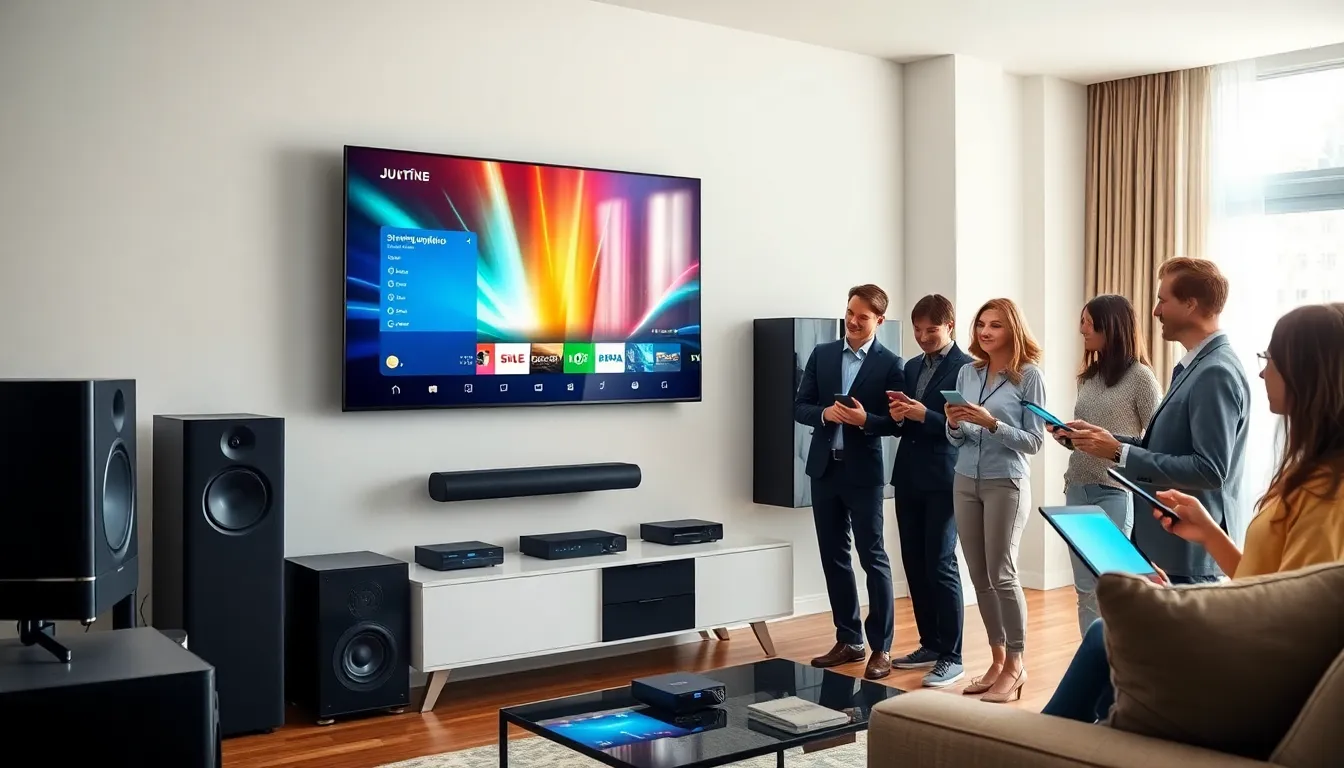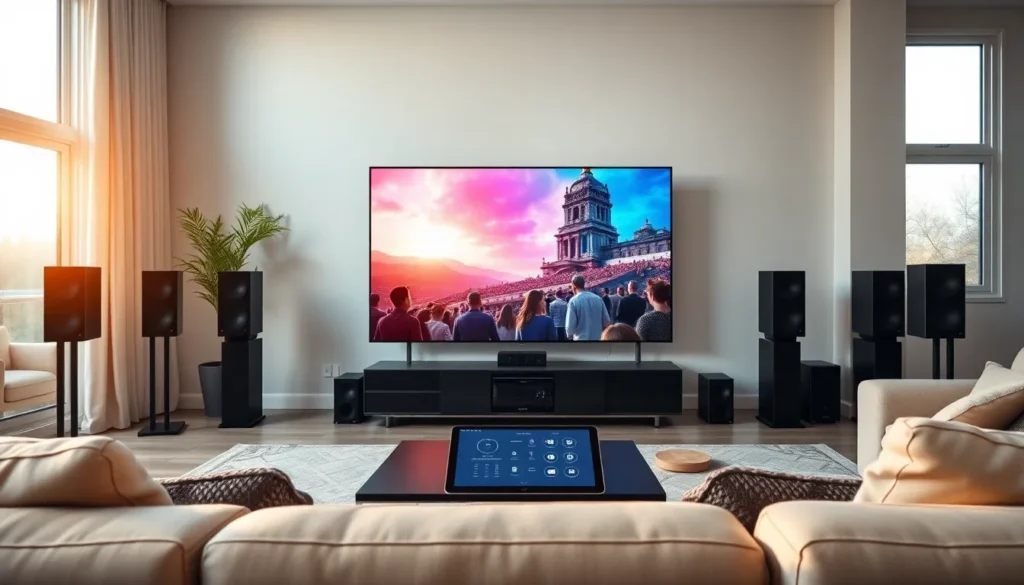When it comes to making our lives more engaging and exciting, audio video technology is the rock star of the show. Picture this: movies at home that rival cinema experiences, music that gets you grooving, and video calls that make your friends seem almost real, without the need for a time machine. Audio video technology has come a long way, transforming how we consume entertainment and communicate. Buckle up, because we’re diving into the intriguing realm of audio video technology. It’s a journey filled with innovation, trends, and a sprinkle of magic.
Table of Contents
ToggleThe Evolution of Audio Video Technology

Over the years, audio video technology has seen a substantial metamorphosis. From the bulky equipment of the 20th century to sleek, sophisticated devices of today, the journey is impressive. It all started in the early 1900s with simple sound systems that accompanied silent films. Fast forward to the 1970s, and you have the introduction of the VCR, which allowed people to record and playback their favorite shows.
By the turn of the millennium, the rise of digital formats changed everything. DVDs took over, followed quickly by Blu-ray discs, offering higher quality audio and video. As the internet became ubiquitous, streaming services emerged, think Netflix, YouTube, and Spotify. Suddenly, movies and music were at our fingertips, accessible anywhere, anytime.
Today’s audio video technology integrates artificial intelligence, providing personalized recommendations and enhancing user experiences. Smart TVs and home theater systems are connected to the internet, allowing seamless access to content with minimal fuss. This evolution didn’t just change the technology: it reshaped how people interact with media on a daily basis.
Key Components of Audio Video Systems
Understanding audio video technology requires familiarity with its core components. At the heart of any audio video system is the source device, which can be a DVD player, streaming device, or gaming console. This device takes center stage, delivering content to be enjoyed.
Next up is the display unit, usually a television or projector. Modern displays, like OLED and 4K TVs, provide stunning visuals with vibrant colors and clarity. But what’s a killer set of visuals without great sound?
That brings us to the audio component. Whether it’s a soundbar, surround sound system, or even high-quality headphones, the audio setup is crucial for an immersive experience.
Finally, the cables and connectors that link everything together deserve a shoutout. HDMI cables have become the standard for high-quality video and audio transmission, but depending on the setup, various connectors may be required to optimize performance.
Latest Trends in Audio Video Technology
The world of audio video technology continuously evolves, introducing exciting trends that keep audiophiles and cinephiles on their toes. One of the most notable trends is 4K and 8K resolution. These higher resolutions are delivering stunning visuals that were once unimaginable, making it feel like the action is happening right in your living room.
Also, immersive audio technologies like Dolby Atmos are taking sound to the next level. Instead of just being in front of you, sound can now come from above and all around, creating a full-circle audio experience. This spatial audio capability keeps viewers engrossed in the narrative.
Another hot topic is the rise of smart technology. From voice-activated controls to seamless integration with other smart devices, users now have a level of convenience that enhances their experience remarkably. Being able to dim the lights and start a movie with just a voice command feels like living in a sci-fi movie.
Finally, streaming quality improvements are notable, with many services now offering content in high dynamic range (HDR). This provides richer colors and deeper contrast, further enhancing our viewing experiences.
Applications of Audio Video Technology
Audio video technology isn’t just for movie buffs: its applications span across various realms. In education, schools and universities are increasingly using AV technology to deliver interactive learning experiences. Picture classrooms equipped with smart boards, video conferencing tools, and online resources that enhance learning engagement.
In the corporate world, video conferencing tools like Zoom have revolutionized how businesses communicate, especially as remote work gains traction. These platforms allow companies to maintain productivity while keeping teams connected, no matter where they are.
Entertainment venues, from concerts to sports arenas, are also harnessing AV technology to enhance visitor experiences. Large screens, high-quality sound systems, and immersive lighting transform events into unforgettable experiences.
Finally, telehealth services are emerging as a game changer in the healthcare field, allowing patients to connect with specialists via video calls. This technology increases access to healthcare while offering convenience and efficiency.
Challenges and Future Directions in Audio Video Technology
Even though the remarkable advancements, audio video technology faces significant challenges. One prominent concern is bandwidth limitations. High-quality audio and video require substantial data transfer, and not all areas can provide the necessary infrastructure, especially rural regions. This imbalance can create disparities in access to cutting-edge technology.
Compatibility issues also pose concerns. With a plethora of devices and platforms available, ensuring seamless integration can be a real headache for users. Duplicate or conflicting standards can hinder the user experience, causing frustration.
Looking ahead, the future of audio video technology promises to be thrilling. Innovations in virtual reality (VR) and augmented reality (AR) have the potential to redefine how content is consumed and created. Imagine diving into a movie or experiencing a concert from your living room, these technologies are not solely sci-fi fantasies anymore.
Also, as AI continues to develop, personalized content recommendations and enhancements in sound and video quality are expected to be even more sophisticated, bringing customized experiences to the forefront.

